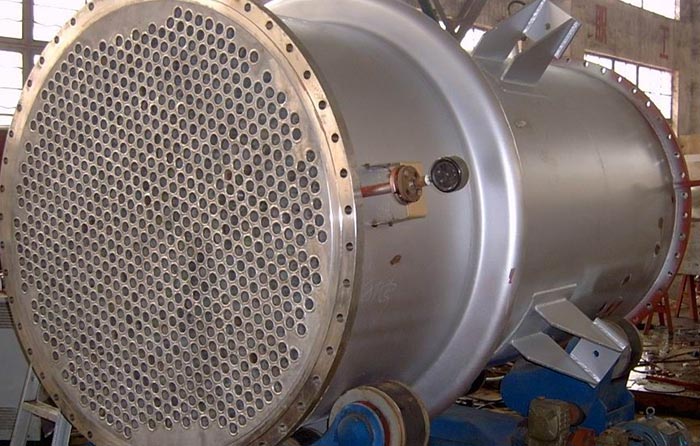Clad steel plates are an essential material for industries such as construction, chemical processing, and shipbuilding. These plates are made by bonding a layer of one metal, such as stainless steel, to a base layer of carbon steel or another alloy. The cladding provides excellent resistance to corrosion, wear, and high temperatures, making it ideal for demanding environments. However, purchasing the right clad steel plate can come with challenges. This article will address common issues faced by customers and provide essential tips to resolve them effectively.
One of the biggest challenges when purchasing clad steel plates is selecting the wrong material for your specific application. The cladding material must be chosen based on the environmental conditions in which the plate will be used. For example, if the plate is used in a highly corrosive environment, stainless steel or nickel alloys are recommended. On the other hand, for high-temperature applications, you may need a special cladding material that can withstand extreme heat.
To avoid making the wrong choice, start by assessing your project’s needs. Consider factors like chemical exposure, temperature extremes, and mechanical stress. Always consult with a supplier who can guide you on the best cladding material for your application.
The bonding process is another area where issues may arise. Clad steel plates are produced using different bonding methods, such as explosive bonding, hot rolling, or welding. Each method has its own advantages and limitations. For example, explosive bonding results in a strong bond, but it may not be suitable for certain shapes or thin plates. On the other hand, hot rolling provides a more uniform bond but may not be as strong in certain conditions.
To prevent problems, make sure to verify with the supplier which bonding process has been used and whether it aligns with your application’s requirements. Always request details about the specific bonding method to ensure the material will perform as expected in your project.
Price differences between suppliers can be a significant issue when purchasing clad steel plates. While it may be tempting to go with the cheapest option, it’s essential to ensure that the lower price doesn’t compromise the quality or performance of the material. Sometimes, cheaper plates may use substandard materials or bonding techniques that may not hold up in harsh conditions.
To resolve this issue, always ask for a detailed breakdown of the costs, including material type, cladding thickness, bonding method, and production process. Compare the prices and specifications across multiple suppliers to make an informed decision. This will help you avoid overspending or choosing an inferior product.
Another common issue when purchasing clad steel plates is failing to verify the material’s quality and compliance with industry standards. Without proper certification, you may end up with plates that don't meet the necessary specifications, leading to delays, rework, or even project failure.
To ensure you’re getting the right material, always request certification and documentation from your supplier. This should include test results for mechanical properties, corrosion resistance, and chemical composition. Verifying this information in advance will save you time and money in the long run.
To understand how these issues affect real-world projects, consider the following examples:
One construction company faced problems when their supplier provided clad steel plates with the wrong cladding material, which was unsuitable for a marine environment. This resulted in accelerated corrosion, forcing the company to replace the plates within just two years. After switching to a different supplier that provided the correct stainless steel cladding for marine applications, the company saw a significant improvement in performance, and the plates lasted much longer—over 10 years without signs of corrosion.
Another example involves a manufacturing company that purchased clad steel plates without verifying the bonding process. They discovered that the plates weren’t bonded properly, leading to a weak structure. By consulting with a different supplier who used hot rolling and providing comprehensive quality checks, the company was able to fix the issue and improve the durability of their products.

Before purchasing clad steel plates, make sure to define your project’s requirements clearly. Understand the environmental conditions the plates will be exposed to, such as temperature fluctuations, chemical exposure, or mechanical stress. This will help you select the appropriate cladding material and ensure the plates perform well in your application.
Choosing an experienced supplier is crucial to resolving common problems when purchasing clad steel plates. Suppliers with a proven track record can help you navigate material selection, bonding methods, and quality verification. They will provide valuable guidance to ensure the materials you receive meet your specifications and are suitable for your project.
Requesting sample testing and certifications is an essential step in confirming the quality and specifications of the clad steel plates. This documentation should include mechanical properties, corrosion resistance data, and other relevant information. If the supplier cannot provide this, it may be a red flag that the materials do not meet industry standards.
When evaluating prices from suppliers, ensure that you get a detailed breakdown that includes the cost of materials, bonding methods, and production processes. This will help you compare products effectively and avoid buying cheaper plates that may compromise on quality.
Now that you have a better understanding of how to avoid common pitfalls when purchasing clad steel plates, it’s time to take the next step. Reach out to a reputable supplier with experience in your specific application. Request a detailed quote, verify the specifications, and ask for certifications. With the right approach, you can ensure that the clad steel plates you purchase will meet the demands of your project, providing durability, strength, and cost-effectiveness.

Comments
0